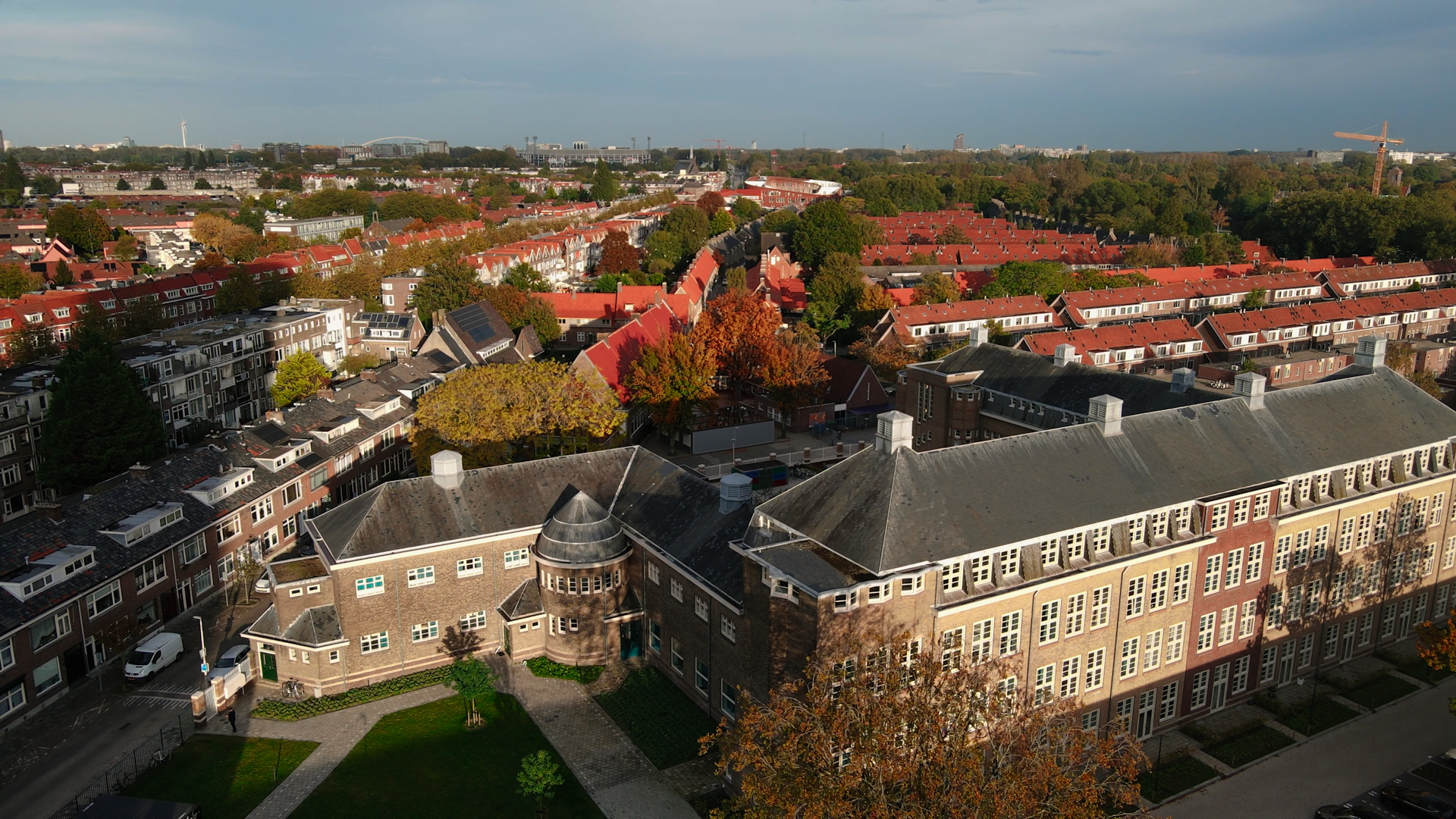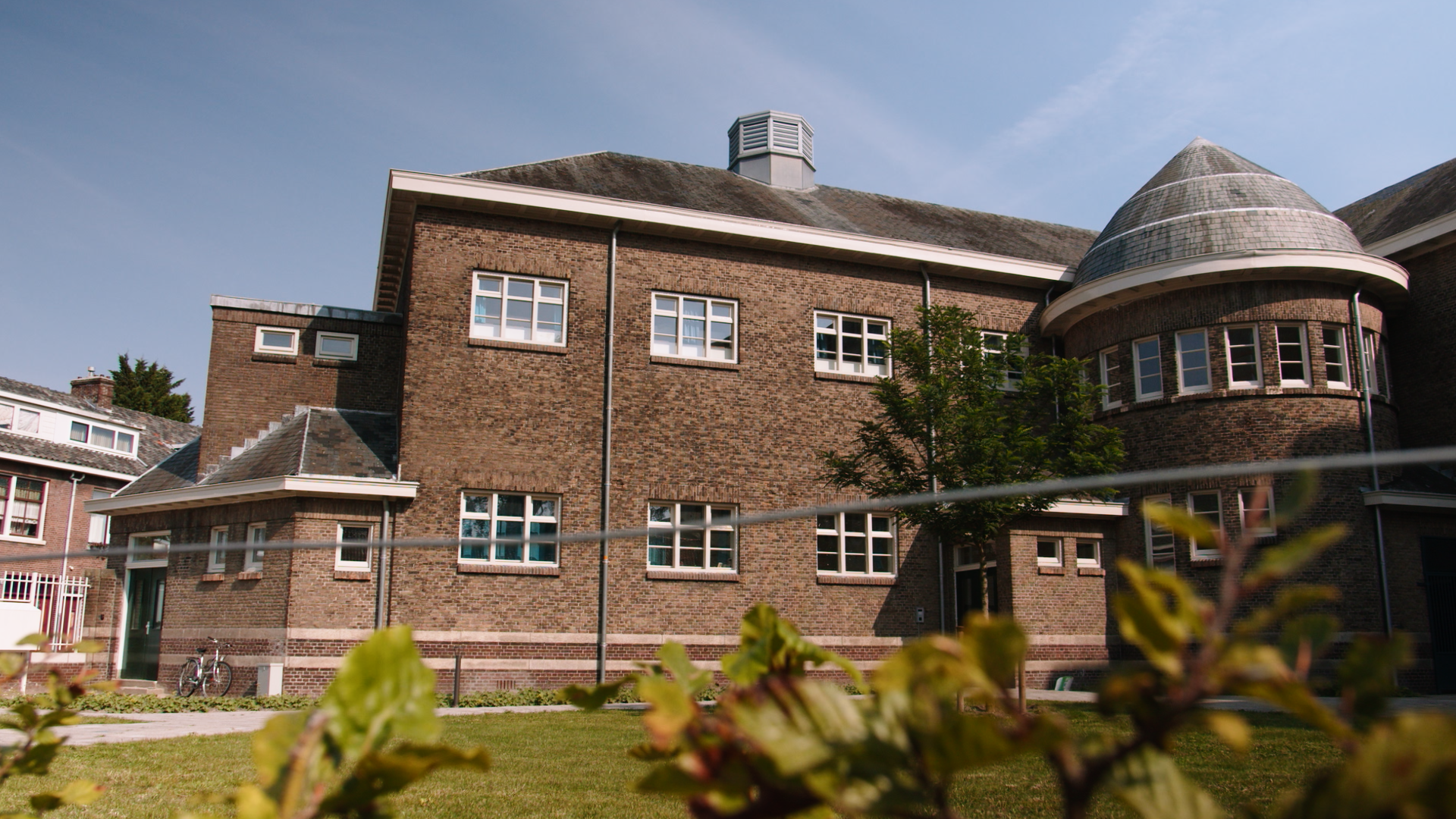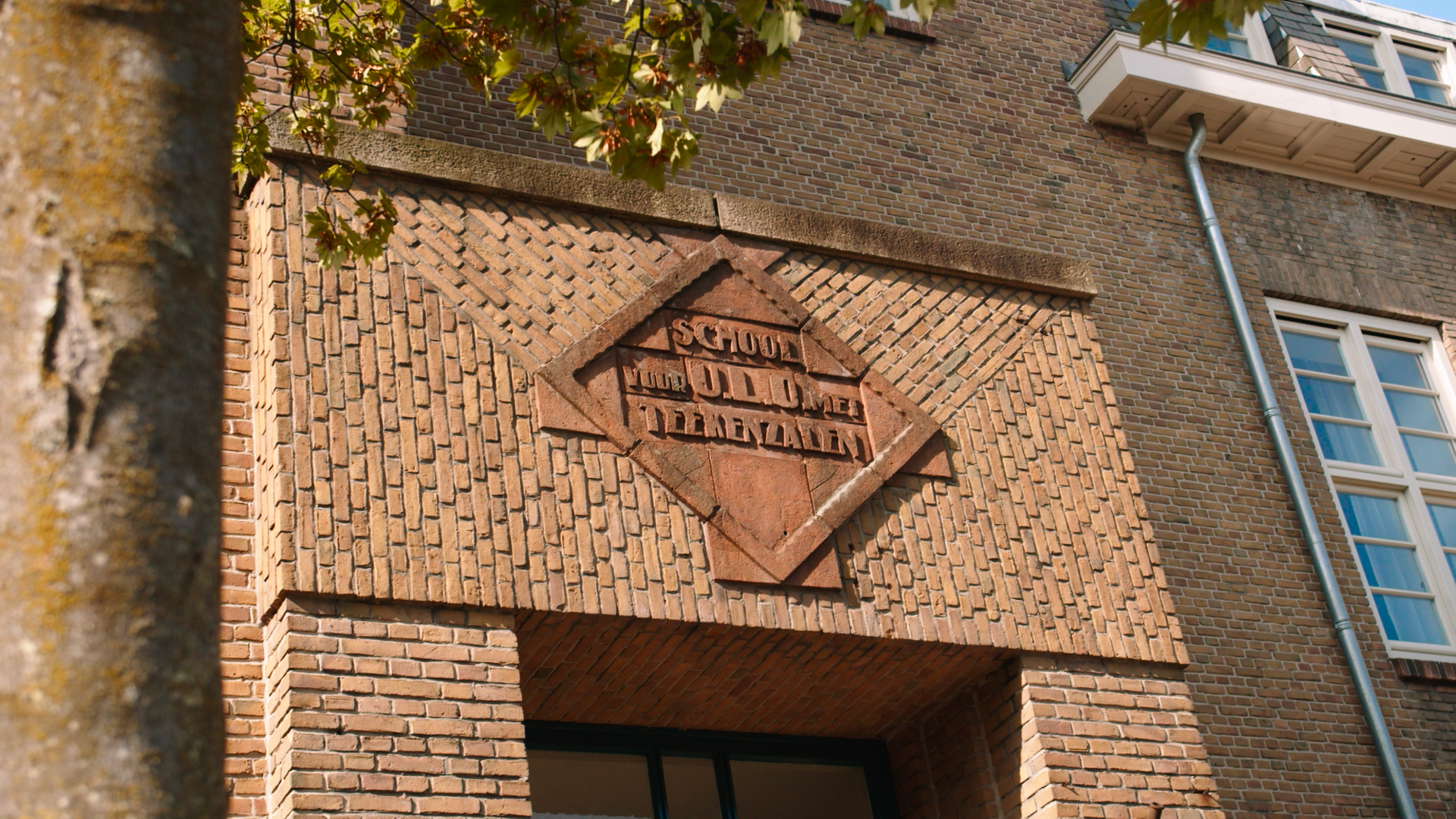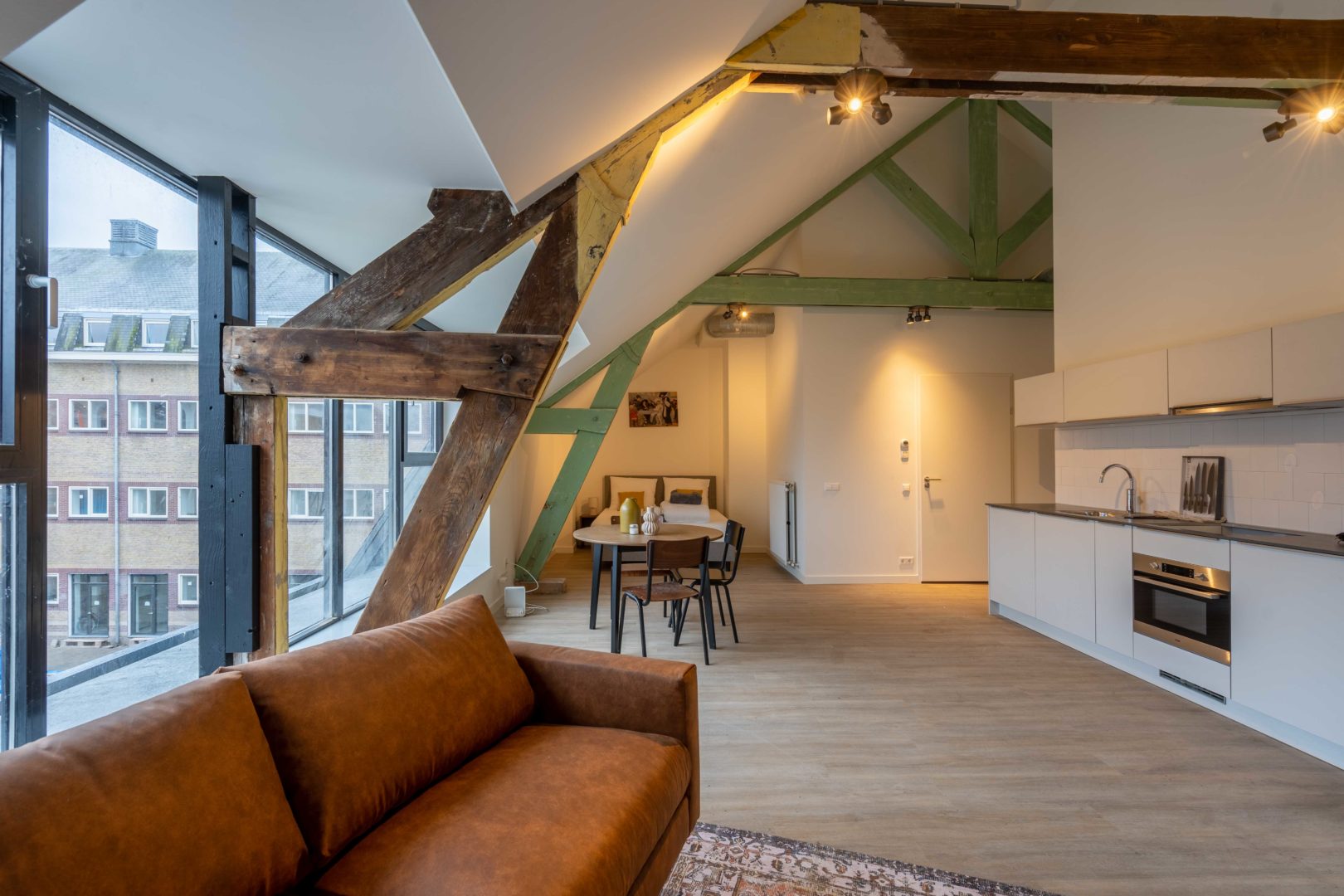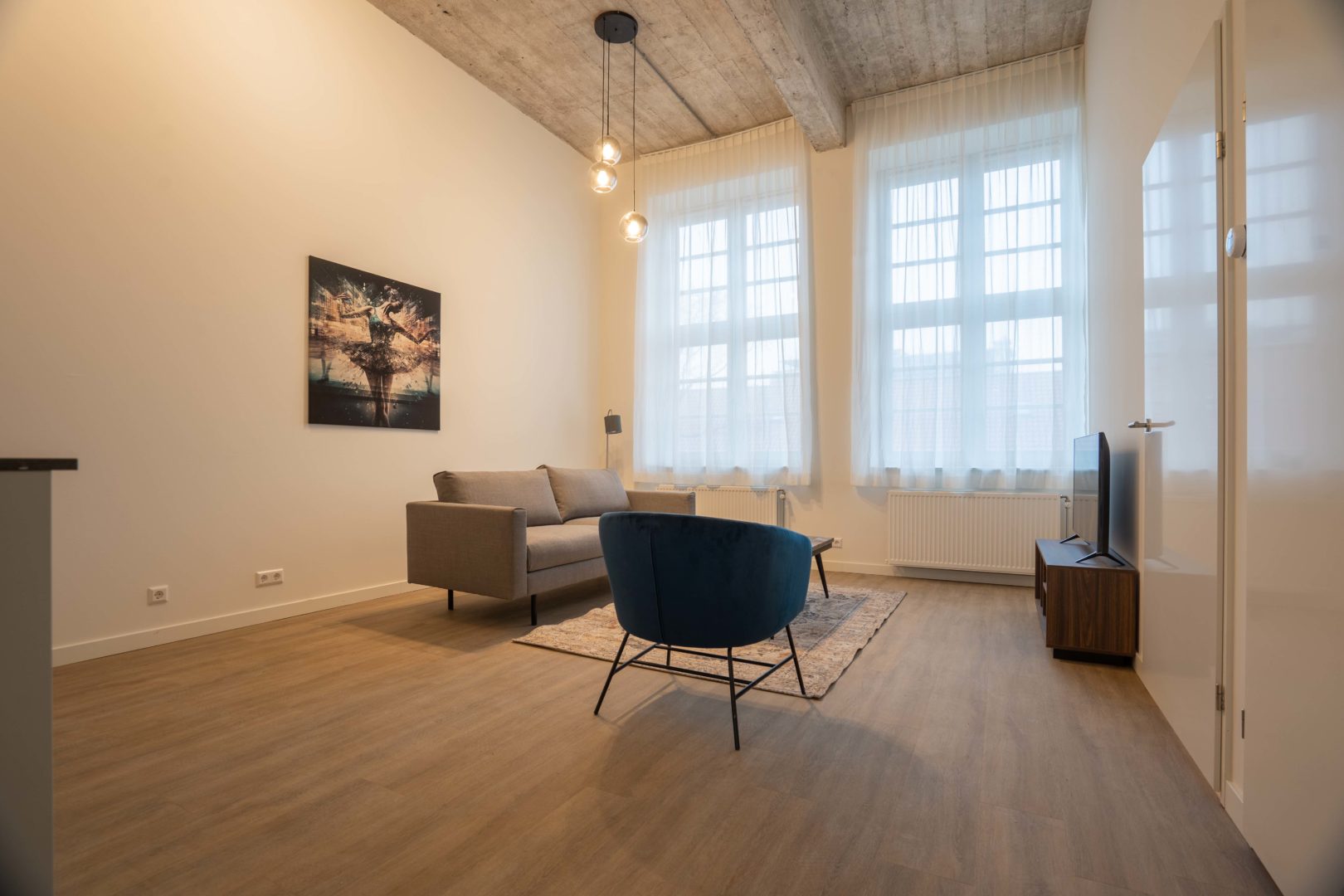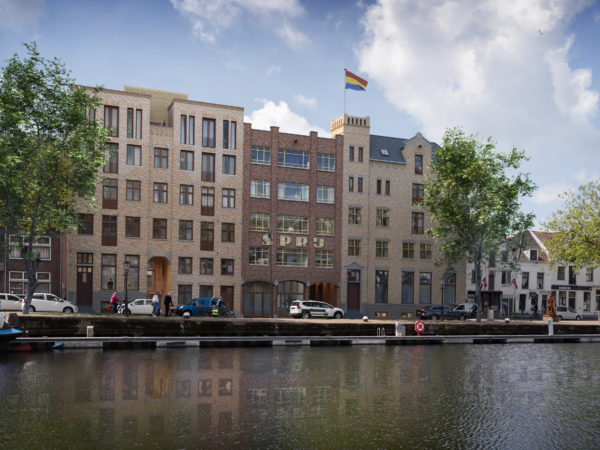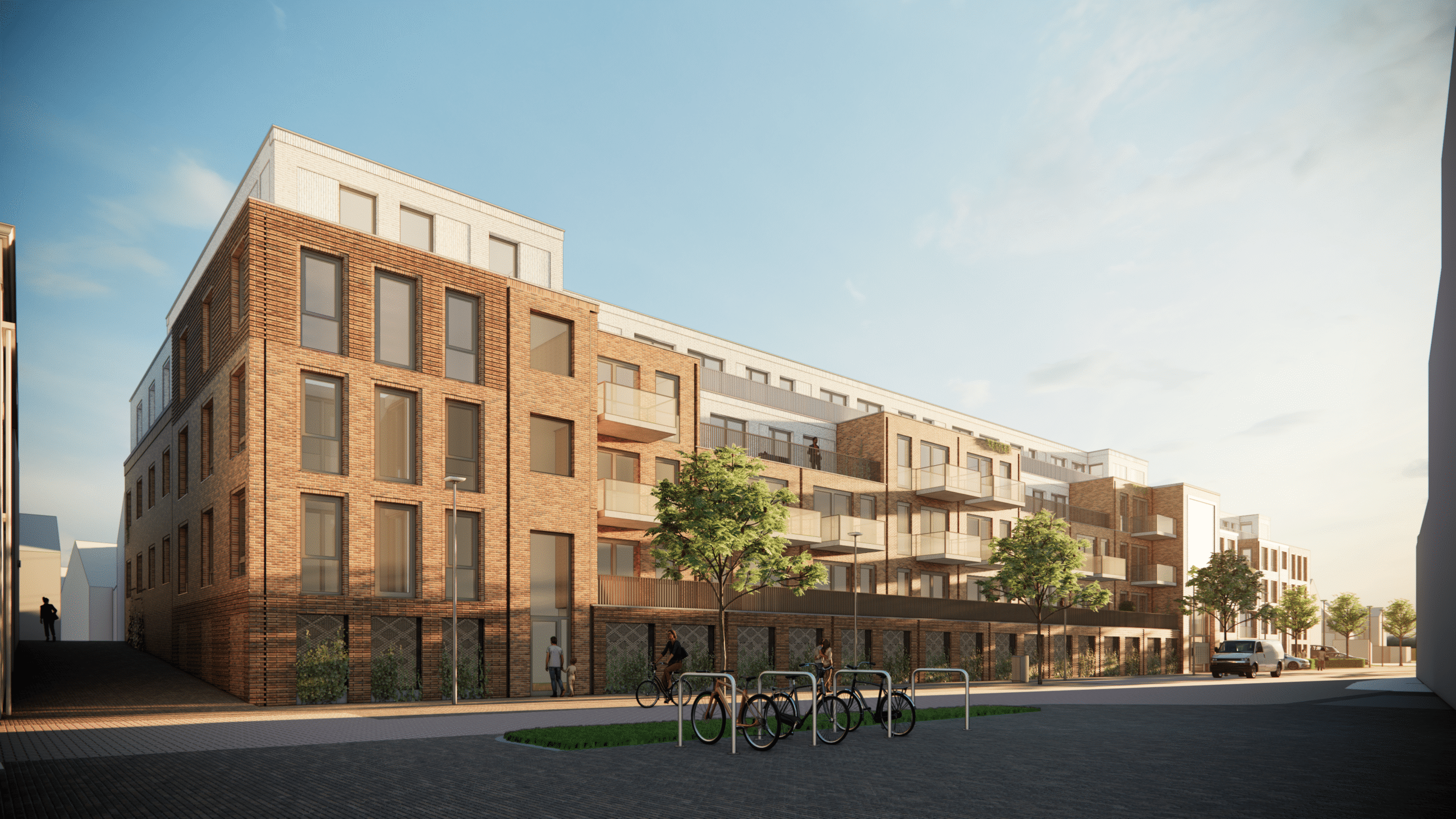HilleHof
Transformation of a monumental school complex
- Rotterdam
- 73 apartments
- 2020-2023
The school complex
Fullhouse is currently transforming the former school complex located between Sikkelstraat, Vorkstraat and Ploegstraat in Rotterdam into housing. The 6000 m2 school complex was built in 1923 and was the largest in Rotterdam at the time. The complex was designed by the Rotterdam municipal architect Walter Dahlen in collaboration with Ad van der Steur, both architects have designed several striking schools in Rotterdam. The building originally housed three schools, two of which for G.L.O. (Ordinary Primary Education) and one for U.L.O. (Advanced Primary Education). In addition to classrooms, the building also included space for a gym, a bathhouse, two service residences and a covered children’s playground.
Cultural-historical value
Fullhouse is redeveloping the complex into mainly rental homes in the middle segment, while retaining the characteristic monumental appearance. This gives the building a new life after years of vacancy and the development gives a positive impulse to social cohesion and quality of life in Vreewijk. The cultural-historical value of the upcoming monument will be respected by realizing a differentiated housing program with as few interventions as possible. The existing structure is largely maintained and the different wings are used by realizing a suitable program in the various spaces. For example, there will be lofts in the covered playground as well as specials in the tower on the Ploegstraat.

Diversity of homes
In the former school complex, mainly homes in the medium and high segment have been built. In the immediate vicinity of Vreewijk there is mainly social housing stock. With Hillehof we will connect to the existing stock, increase diversity and at the same time offer opportunities for social climbers who wish to make a residential career in their own neighborhood. Providing space for social climbers is one of the spearheads of the National Program Rotterdam-Zuid (NPRZ). To strengthen Rotterdam Zuid, it is crucial to offer residents who need to leave their social housing the opportunity to continue living in their existing neighborhood in Rotterdam Zuid. We hope to contribute to this with Hillehof.
Sustainability
The school complex was built in 1923 and was therefore redeveloped into housing exactly 100 years later. In the transformation, we were guided as much as possible by the existing (classroom) layout and structure of the building, so that no materials were unnecessarily demolished and added. Reusing 100-year-old materials in a new function is the most sustainable way of building homes available.
We have reused as many materials as possible. For example, the natural stone from the facades where recesses have been sawn has been reused as a jeu de boules court in the courtyard. Seating areas around the green court are made from concrete residual material.
The homes are all connected to district heating (already present in the neighborhood) and have A and A+ energy labels. This makes the homes (especially for monuments) very sustainable and energy efficient. Due to the monumental character, certain types of heat pumps are not an option and you also limit the load on the electricity network with district heating.
The houses were built under a green declaration. The Green Projects Regulations are a joint regulation of the Ministry of Infrastructure and Water Management and the Ministry of Finance in The Netherlands. They thereby stimulate sustainable and innovative (construction) projects. The Netherlands Enterprise Agency assesses the projects on behalf of the Minister of Economic Affairs. After a positive assessment, the RVO issued a Green Declaration. One of the components, for example, is that only FSC certified wood has been used in construction.
32,000 paving stones have been removed from the outdoor area of HilleHof to create a green courtyard. In addition to an enormous quality boost for the residents, the green outdoor space adds a lot to climate adaptation in the collection of rainwater and heat stress. Semi-paving has been applied where possible and this provides additional relief to the sewer system.
Partners
-
Municipality:Municipality of Rotterdam
-
Monuments advisor:Bureau Polderman
-
Architect:INBO
-
Architect:Meet Architecture
-
Construction:FULLSPEED Construction (FULLHOUSE Group)
-
Landscape architect:Urban Synergy
-
Structural engineer:IMd Raadgevende ingenieurs
-
Installation advice:DGM Technisch Advies

